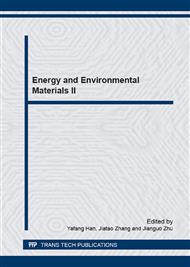p.539
p.546
p.552
p.559
p.564
p.569
p.574
p.579
p.583
Theoretical Calculation and Experimental Study on the Forming Heat of Cement Clinker Made from Steel Slag
Abstract:
When steel slag, a by-product of steel making in impurity catching process, is added, the forming process of cement clinker and the major reactions in that process are changed. Since there are dramatic differences between the chemical components and mineral compositions of steel slag and that of natural cement raw materials, the empirical equation for the calculating forming heats of cement clinker made of limestone and clay is no longer applied for those made of steel slag. In this paper, the empirical equation for forming heat calculation of steel slag added cement clinker was promoted, and testified by acid dissolution experiments. Results showed that the change of raw materials had great influence on the forming heat of cement clinker. When the traditional raw materials were replaced with steel slag, the forming heat of cement clinker reduced. Calculating the forming heat by our revised empirical equation can help reduce errors and bring great convenience for the calculation and evaluation of heat efficiency. This research provides theoretical underpinning for the study and calculation of forming heat of steel slag added cement clinker.
Info:
Periodical:
Pages:
564-568
Citation:
Online since:
March 2015
Authors:
Price:
Сopyright:
© 2015 Trans Tech Publications Ltd. All Rights Reserved
Share:
Citation:


